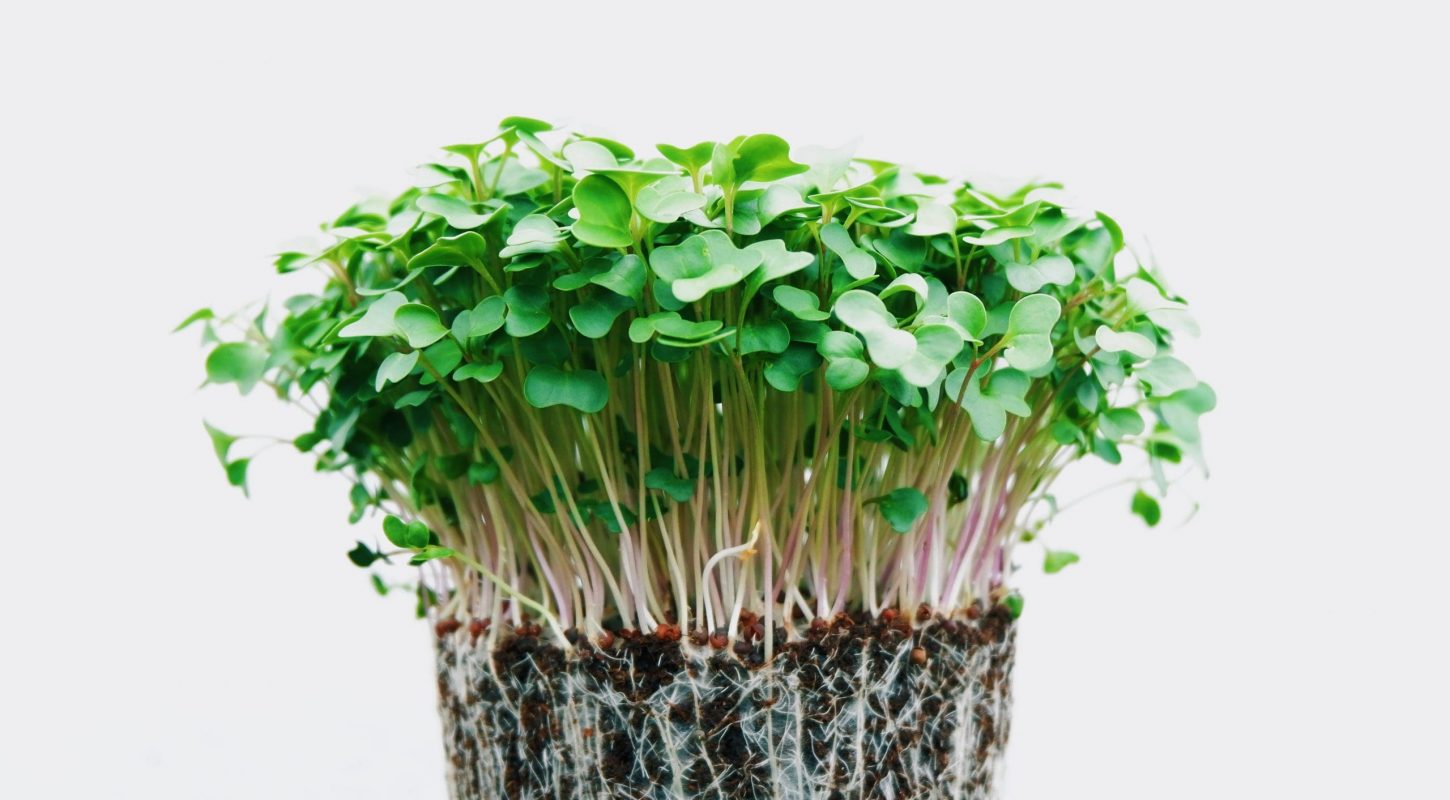Your diet can be the most significant impact you make for the environment over the course of your lifetime — so follow these 4 ways to eat for the environment.
It’s not just about eating for your own personal wellness. Today, it’s also about eating for a healthier planet. Fifty-nine percent of consumers say it’s important to them that the foods they purchase and consume be produced sustainably, up from 50 percent the previous year. And they’re right, as what you put on your plate makes an enormous impact on planetary health — making it one of the single most significant things you can do in your own lifetime to reduce your environmental footprint.
The Food System and the Environment
Ever since the first farmer struck his shovel into the dirt, the health of the environment at the hands of agriculture has been on a slow decline. In the last fifty years, a much more dramatic effect has occurred due to the growing industrialization of the food system. As farms got larger, more intensive and vertical, and less diverse, there has been a substantial increase in production, but with consequences, including pollution, contaminants, like nitrogen and pesticides, and depletion of natural resources, such as soil and water (IOM, 2015), as well as contribution to climate change (Behrens, et al., 2017).
“There are many ways that our food system impacts the environment,” says Christian Peters, Associate Professor at Freidman School of Nutrition at Tufts University, in the Agriculture, Food and Environment division. While there are numerous ways in which our diets impact the planet, including soil health, soil erosion, biodiversity, water quality, and agricultural inputs flowing into our waterways, Peters lists the top four concerns as follows:
- Energy Use. “A great deal of energy is used in our food system, which accounts for about 15-17 percent of our total energy use. There is so much mechanization in our food supply, from farms, food processing, transportation, and retail stores,” says Peters. This energy is largely in the form of fossil fuels, which increases greenhouse gas emissions.
- Climate Change. On top of energy use, other issues, such as deforestation to make way for more farms, fertilizer production, and methane and nitrous oxide emissions contribute to global warming. (Sustainable Table, n.d.) No wonder that agriculture is responsible for up to 30% of total greenhouse gas emissions. (Aleksandrowicz, et al., 2016)
- Land Use. “Over 50 percent of the land in the lower 48 states is used for some sort of agriculture,” says Peters. This intensity of agriculture exacerbates climate change, drives biodiversity loss, degrades soils, and threatens water resources. (Aleksandrowicz, et al., 2016)
- Water Use. It’s the same scenario for water, according to Peters, who reports that 70 percent of the world’s water withdrawals go for agriculture, which endangers supplies of water needed for human health, as well as a beautifully, bio-diverse planet. (Aleksandrowicz, et al., 2016)
What You Eat Matters: Shift to Plants
An increasing body of evidence suggests your eating style is quite impactful on the environment. “Livestock account for the largest share of the carbon footprint of the diet, because livestock are fed crops,” says Peters, who adds that ruminants (i.e., cows, sheep, goats) have a larger impact, because they also emit methane from burping, and produce manure—both serious green house gas contributors.
It’s quite clear that shifting to a more plant-based diet lowers your carbon footprint, says Peters, adding, “Plant-based diets require less land and water, too.” Indeed, research over the past decade consistently supports that plant-based diets are more sustainable than Western-style, high-animal food diets. A systematic literature review of research studies on sustainable diets identified 113 studies that assessed the environmental impacts of diet, many of which identified benefits of more plant-based eating styles (Jones, et al., 2016). Studies also link plant-based foods with lower carbon and water footprint. (Meier, & Christen, 2013)
4 Ways to Eat for the Environment
If you’re concerned about your impact on the planet, you can do something about it.
1. Eat More Plants, Fewer Animals. This is the most important step you can make, according to Peters. Vegetarians and vegans have the lowest carbon footprint, but even semi-vegetarians and pescatarians have lower impact than carnivores. (Sabate, & Soret, 2014) Make a few of your meals meatless, and use meat as a seasoning (not the main event) in your favorite dishes, such as stews, casseroles, and stir-fries.
2. Power Up on Legumes. Peters suggests including more of these healthful foods, such as beans, lentils, and peas because they can replace meat on your plate, are more drought tolerant, and provide natural fertilizer to the soil because they fix nitrogen in the air.
3. Trim Food Waste. About 30-40 percent of the U.S. food supply is wasted, which has multiple impacts on the planet. All of the land, water, energy, and synthetic inputs (fertilizer, pesticides) used to produce the food—and all of those impacts — go towards generating food that will never be consumed. And foods that go to the landfill create green house gas emissions.
4. Eat More Whole Foods. Peters notes that highly processed foods require greater energy due to multiple processing steps, packaging, and transportation. You’re better off eating whole, minimally processed foods—whole grains, legumes, vegetables, and fruits — most of the time.
Sharon Palmer, MSFS, RDN, is The Plant-Powered Dietitian, a registered dietitian nutritionist with more than 18 years of experience in the field of plant-based nutrition and sustainability. Sharon also holds a Master of Science in Sustainable Food Systems. She’s the author of 2 books, The Plant-Powered Diet: The Lifelong Eating Plan for Achieving Optimal Health, Beginning Today and Plant-Powered for Life: Eat Your Way to Lasting Health with 52 Simple Steps & 125 Delicious Recipes.
Aleksandrowicz, L., et al. (2016, November 30. The Impacts of Dietary Change on Greenhouse Gas Emissions, Land Use, Water, Use, and Health: A Systematic Review. PLOS One. Retrieved from: http://journals.plos.org/plosone/article?id=10.1371/journal.pone.0165797.
Behrens, P., Kiefte-de Jong, J. C., Bosker, T., Rodrigues, F. D., de Koning, A., & Tukker, A. (2017, December 4). Evaluating the environmental impacts of dietary recommendations. PNAS. Retrieved from: http://www.pnas.org/content/early/2017/11/28/1711889114.
Committee on a Framework for Assessing the Health, Environmental, and Social Effects of the Food System; Food and Nutrition Board; Board on Agriculture and Natural Resources; Institute of Medicine; National Research Council. A Framework for Assessing Effects of the Food System. Washington, D.C.: National Academies Press; 2015.
IFIC. (2017). Food & Health Survey. Retrieved from: http://www.foodinsight.org/sites/default/files/2017-ExSum-FoodValues_0.pdf
Jones, A. D., Hoey, L., Blesh, J., Miller, L., Green, A., & Shapiro, L. F. (2016, July 11). A Systematic Review of the Measurement of Sustainable Diets. Advances in Nutrition. 4: 641-664. Retrieved from: https://academic.oup.com/advances/article/7/4/641/4568677.
Meier, T., & Christen, O. (2013, January 15). Environmental impacts of dietary recommendations and dietary styles. Environ Sci Technol. 47:877-88. Retrieved from: https://pubs.acs.org/doi/full/10.1021/es302152v.
Sabate, J., & Soret, S. (2014, June 4). Sustainability of plant-based diets: back to the future. Am J Clin Nutr. 100:476S-482S. Retrieved from: http://ajcn.nutrition.org/content/100/Supplement_1/476S.full.
Sustainable Table. (n.d.). Agriculture, Energy, & Climate Change. Retrieved from: http://www.sustainabletable.org/982/agriculture-energy-climate-change.
Photo by Devi Puspita Amartha Yahya on Unsplash




